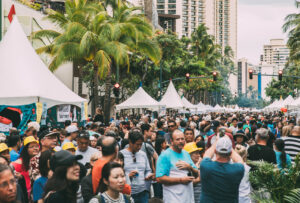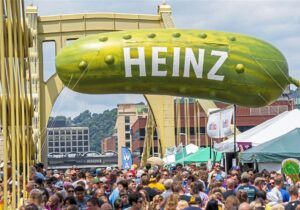Definition
Coffee is a popular beverage made from the seeds of coffee plants boiled and disintegrated. So, understanding that the most often cultivated and consumed varieties are Robusta and Arabica. The remaining coffee cherry seeds are used to make beverage grains. However, for the making of this popular drink. It also, gathers some ground, roasted, and dried beans there are numerous methods to serve coffee. Including cappuccino, black coffee, espresso, and other varieties. Therefore, espresso’s primary ingredient, coffee beans, is responsible for its well-known energizing benefits.
History
So, many of the more than fifty countries where coffee is grown also produce espresso. India, the Indonesian island of the Dominican Republic, Brazil, Colombia, Kenya, Ethiopia, Peru, and other countries are among the biggest producers of coffee. Therefore, every country that grows coffee grows its beans, and each one has a unique flavor.
Originally planted on deserted coffee plantations in the Ethiopian highlands. Coffee is now produced in many other countries worldwide. Local legend has it that there, goat herder Kaldi saw these precious beans had potential.
Tradition has it that Kaldi discovered coffee. Therefore, when he saw his goats who had eaten berries from a certain tree and were so animated that they were staying up late at night.
Notwithstanding being grown. Moreover all over the world coffee was initially discovered in abandoned plantations in Ethiopia’s highlands. Folklore in the area says that goat herder Kaldi saw promise in these precious beans there.
According to legend, Kaldi found coffee after he observed that his goats, who had consumed berries from a specific tree, were so animated that they refused to go to sleep at night.
Types of Beans
since the two most traded and prized varieties of coffee are Arabica actually (Coffee Arabica) and Robusta (Coffee Canephora). The amounts of aroma and caffeine in these beans vary. Here’s a brief overview of each.
Coffee
The two most traded and prized varieties of coffee are Arabica (Coffee Arabica) and Robusta (Coffee Canephora). So, the amount of each aroma and caffeine in these beans varies. Here is a quick synopsis of each.
Arabica

The coffee made from Robusta beans typically smells less aromatic and harsher than Arabica coffee. Therefore, the resulting cup of coffee is stronger and more bitter even though the Robusta varietal seeds have more caffeine than Arabica beans.
Plants of the Robusta kind are more hardy and resistant to pests and illnesses. So, Bacteria are tolerant to higher temperatures and altitudes and can thrive in a broader variety of environments.
Because of their unique characteristics, specialty coffee varietals—in addition to Arabica and Robusta—are more uncommon and highly prized.
For Example
Grown predominantly in West Africa, Liberica beans are distinctive in that their flavor combines flavors of both fruit and flowers.
Grown in Southeast Asia, Excels beans, also known as Coffee Liberia var. Liberia is commonly referred to as Liberia. They taste rich and unique, with subtle notes of fruit and spice.
However, the premium and highly sought-after Arabica variety Geisha (Coffee Arabica var. geisha) features notes of citrus and florals in its flavor profile. Panama and other Central American nations are frequent growers of it.
Bourbon:
Coffee Arabica bourbon is a variant of Arabica noted for its fruity and sweet flavor. Despite being grown throughout the world, the primary growing regions are Central and South America.
The decision between Arabica and Robusta coffee is usually based on personal taste as well as other considerations including preferred flavor profile and brewing technique. So, I am looking for mouthwatering and unique tastes, specialty coffee.
This section covers the various varieties of coffee: The investigation was completed. So, espresso is made with one or two shots, a big quantity of warm milk, and a thin coating of foamy milk on top. Equal parts heated milk, milk foam, and a few shots of espresso are combined to make a cup of cappuccino.
Stronger coffees, like Nespresso, are frequently the foundation for a variety of drinks. Shots of it are served.
Method of Making coffee:
Made with milk that has been gently cooked and is free of foam or froth. A single serving of espresso can be served with 1/3, 1/2, or 1 cup of water in an Americano.
Two-thirds hot milk and one-third espresso with chocolate flavoring are commonly used to make coffee.
Macchiato: An espresso coffee beverage served with a dash of steaming or frothed milk is called a macchiato. Espresso shots or one shot of concoction milk with micro frothing placed on top (flat white)
The varieties are available
Decaf: which is made from regular coffee beans that have had the majority of the caffeine removed;
Irish Coffee: which is made from coffee, sugar, cream, and Irish whiskey;
Iced Coffee: which is your favorite coffee served cold with ice;
Café au Laity: which is made from brewed coffee and steaming milk. One-part steaming milk to one-part coffee, with no foam or froth on top.
Health Benefits

Coffee turns out to be useful for more than just waking us up in the morning and keeping us alert in meetings. Numerous studies conducted recently indicate that coffee may have several health advantages.
This remarkably complex beverage, which has over 1,000 components that can impact the body, is consumed by 400 million Americans each day. Among the most researched are polyphenols (antioxidants that can help reduce or prevent cell damage) and caffeine, a nervous system stimulant with good benefits on cognition.
Boost your overall Health
Coffee shop employees use a single or double shot of espresso, a carefully crafted cup of heated milk, and a thin layer of foamy milk on top. The drink in issue is prepared with one or two shots of espresso, steamed milk, and milk foaming. Strong coffees, such as Nespresso, are frequently utilized as the foundation for a variety of drinks.
Lowering the possibility of getting type 2 Diabetes
People with a four-decade duration who drank one cup less Expresso per day. Then those who drank more than one cup had a 17% higher frequency of Type 2 diabetes.
If you already have Type 2 diabetes, the WHO advises against consuming Expresso and other caffeinated goods. It has been shown that Expresso raises the levels of insulin and blood sugar in those who have the illness. Drinking four eight-ounce cups of black expresso a day and twice as much caffeine may help people with the disorder manage their uncontrolled movements, according to a 2012 study published in the American Academy of Neurology journal. Many studies suggest that drinking coffee may reduce the chance of developing Parkinson’s disease. To produce the same amount of nicotine, more than nine cups of boiled black tea would be required.
Protect your Liver
Lots of studies confirming the benefits of Expresso for the liver have been approved for publication in prestigious publications. Those advantages include a decreased risk of liver cirrhosis-related death, a decrease in hazardous liver-related enzyme levels, and a decreased degree of liver scarring in hepatitis C patients.
Increase good Heart Health
Drinking one or more cups of plain, caffeinated Expresso per day was linked to a significant reduction in an individual’s long-term risk of heart failure.
Lower the risk of Melanoma
A 2015 study that was published in the Journal of the National Cancer and Research looked at over 447,000 people’s Expresso consumption over ten years. They discovered that the melanoma risk was 20% higher in people. Who drank four or more cups of caffeinated Expresso per day than people who drank only decaffeinated Expresso?
Reduced Danger of passing away
Drinking coffee first thing in the morning may help reduce the risk of passing away. However, moderate consumption of both sugar- and unsweetened Expresso was linked to a lower risk of death. According to a 2022 study published in the Annals of Internal Medicine. Further, Investigators found that people who consumed 1.5 to 3.5 cups of Expressoa day. sometimes with sugar, had a 30% lower chance of dying from any cause during the study.
Drink Coffee Gently
Lastly, Feinstein advises consuming one or two cups of Expresso every day, but not substituting it for other wholesome routines. Unless you have a condition like reflux, it’s fine to keep drinking a reasonable amount of Expresso he says. So, you can also try other healthful methods to obtain some of the advantages you may associate with Expresso
“Suppose that since many people rely on Expressoto to fight after-lunch sluggishness every day. You might think about getting moreover, outside and going for a 10 to 20-minute walk, So, advises Rothschild. “However it will not only wake you up, but you’ll also get a lot of benefits in terms of bone health and cardiovascular health.”
Methods for Making Coffee
- Techniques for Brewing Coffee
- Fill a cup with 1.5 tsp instant coffee and 1.5 tsp sugar (or additional sugar to taste).
- Three tablespoons of hot, boiling water should be added.
- First, whisk together the coffee, sugar, and water.
- Next, quickly stir and beat the coffee for three to four minutes
Frequently ask Questions
What are the benefits of drinking coffee?
One naturally produced stimulant that aids in attention and alertness is caffeine. Expresso contains it. However, it can help combat second fatigue and enhance again mental clarity in general.
Enhanced Physical Abilities: Cappuccino releases adrenaline by stimulating the nerves. With the release of fat from adipose tissues, cool sculpting enhances athletic performance by allowing the fat to be burned for energy.
Which is better, coffee or tea?
L-theanine, a chemical found in tea, may mix with caffeine to help you stay alert and focused for longer periods. Expresso could provide you with a quick energy boost.
What components are in coffee?
Depending on the method you use, making Expresso can be a straightforward or complex procedure. Here is a basic how-to for preparing coffee with drip brewing, a popular method:
Tools and Ingredients:
- Freshly ground
- Coffee beans
- Coffee maker
- Water
- Coffee filter
What kind of coffee is healthiest?
Black Coffee: Without needless additives consuming coffee without extra sugar, cream, or flavorings lowers the calorie count.
Conclusion
Finally, let me say that coffee is more than just a beverage. So, it’s a global cultural phenomenon that has greatly influenced civilization. Its broad appeal and incorporation into daily life can be attributed to its invigorating properties, varied taste profiles, and extensive historical background. Expresso has antioxidant properties which make moderate consumption usually regarded as safe and possibly even beneficial to health. The social side of coffee is demonstrated by the lively coffeehouse scene and community.











